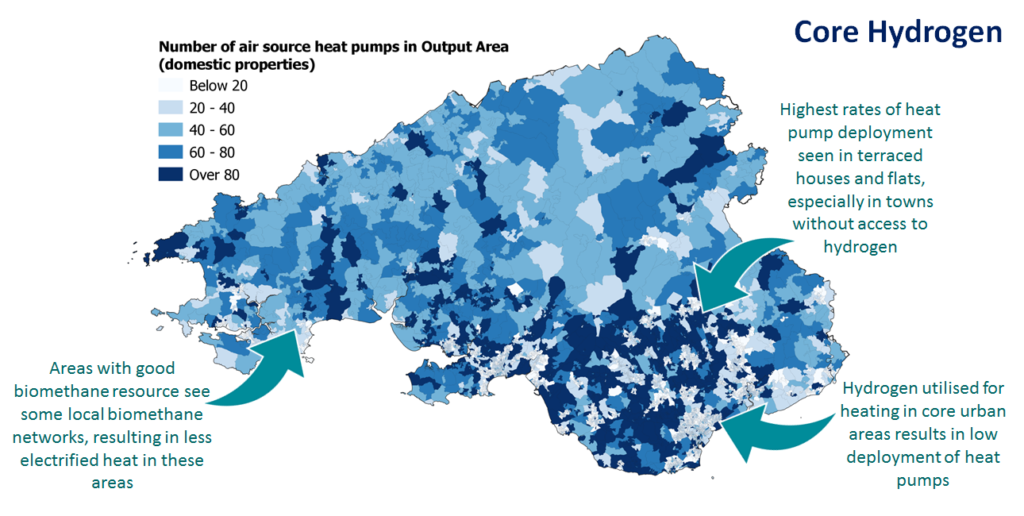 Poppy Maltby, senior project manager at Regen launches the first joint electricity and gas 2050 net zero scenarios covering their shared distribution network region in South Wales.
Poppy Maltby, senior project manager at Regen launches the first joint electricity and gas 2050 net zero scenarios covering their shared distribution network region in South Wales.
Regen launched the results of a unique study, working with Western Power Distribution and Wales & West Utilities, to develop scenario pathways to show how the South Wales gas and electricity distribution networks could reach Net Zero by 2050.
A core focus of the pathways was decarbonisation of heat, in a future where no unabated fossil fuel is burnt. We looked at three main heating alternatives that are still on the table: electrification, widespread use of hydrogen, and a combination of the two with hydrogen in dense urban areas and mainly electrification elsewhere.

Each pathway presented very different futures for the gas and electricity distribution networks and has profound implications for energy system investment. ‘Business as usual’ network investment timetables already stretch out decades ahead. What this revealed was that, although it is valuable for networks to understand the range of outcomes, more certainty will be needed before networks can invest effectively to support net zero heat.
Switching off analogue signals was legislated in 2001 and the whole telecoms industry got behind the ‘ambitious’ timetable. The switch off took 6 years to plan and then five years to complete the transition. Taking 11 years in all. That was just for our TVs.
Our analysis assumed that an equivalent ‘switch over’ to hydrogen or ‘switch off’ of fossil gas starts in 2035, giving a 10-15 year transition period by 2050. A transition that starts in 2035 would need heat pathway decisions to be made well before that date.
2035 is 15 years away. This is the lifetime of a good boiler.
Planning for the heat transition will be easiest if it focuses on a single solution, either all electrification or hydrogen. This would mean that policies can be applied to the vast majority of homes and businesses and the networks can make blanket decisions about investment.

However, another option is that heat decarbonisation will involve a patchwork of different approaches depending on where you are located, allowing use of local resources, reflecting different housing types or other social factors. This was explored in the Core Hydrogen scenario and it would require heat pathways to be decided at a local and regional level. Importantly for the networks, this means they would need to make specific investments in specific locations.
What is clear, however, is that net zero heat is something we need to start planning for now. This should start with a national heat strategy involving both distribution networks in a consultation process that that feeds into local heat decision making.
In the absence of the former, local areas and the distribution networks (and integrated DFES analyses) can start by helping people understand the options for decarbonised heat locally. It is important also to start work on the ‘no regret’ actions such as new building standards, supporting energy efficiency and transitioning existing off-gas areas, as explored in Regen’s decarbonising heat paper launched this year.
Decarbonisation of heat will be a logistical exercise of huge complexity, which is likely to require as much time to plan and prepare as it will to transition. We may think of net zero as the (relatively) distant future, but in reality, it is not so far away.
